The flying car that could turn into a biplane
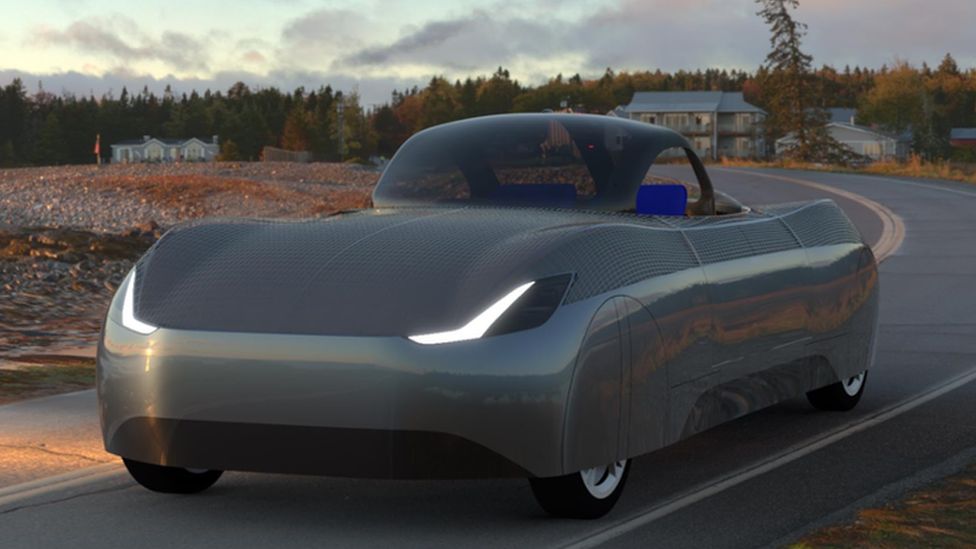
At a launch event at Draper University in San Mateo, California, a start-up revealed how its flying car hopes to take off.
Alef bills its still-in-development electric vehicle, the Model A, as the first true flying car – a vehicle that it hopes will look like a sleek electric car but be capable of vertical take-off, and able to fly for 110km (68 miles).
The firm hopes to compete in a market occupied by well-advanced rivals, such as AirCar and the Pal-V gyrocopter that are already flying and driving.
But Jim Dukhovny, Alef’s chief executive and co-founder, argues most existing vehicles are not strictly flying cars in his opinion.
“A flying car has to be a car, which means it can drive on a regular street, park in a regular parking space. And it also should have vertical take-off,” he told the BBC.
“If you require an airport to take-off, what problem are you solving? And why is this a flying car?”
Flip to fly
The top surface of the Model A’s car-like exterior is a mesh so that air can pass through to eight propellers inside the body which provide lift.
But flying any distance using these alone, without the assistance of wings, would require prohibitive amounts of power.
Alef’s proposed solution is novel – for longer flights the Model A transforms into a biplane.
After a vertical lift-off, the Model A will turn onto its side, the two-person cockpit swivels so the driver remains facing forward, and the car becomes a biplane with the long sides of the vehicle forming the top and bottom wings.
The classic biplane shape, with two wings, one on top of each other, is easier to see in the Model A if you imagine the mesh in-between the solid sides being removed. Alef has also produced a video visualising the transition.
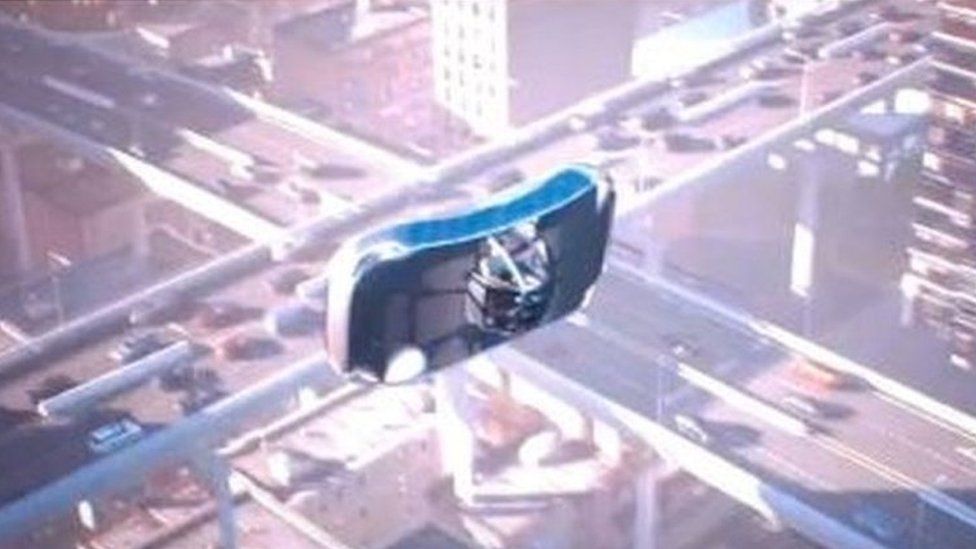
Forbes observed that the way it would fly resembles the Opener Blackfly, an existing vertical take-off electric aircraft.
It’s an ingenious idea, but is it a practical one?
Bringing flying and driving together adds weight, electric power also means heavy batteries.
“The design is right on the ragged edge of what the physics and technology can do, which is where you would expect it to be,” says aeronautical engineer Professor Steve Wright of the University of the West of England.
The mesh, as visualised, might also cause significant aerodynamic drag, he adds.
Alef says it has managed the transition to biplane in “scaled flights” since 2018. And it has large prototypes capable of vertical flight – though they don’t yet resemble the polished appearance of the firm’s mock-ups and concepts.
But Prof Wright warns the jump from a prototype to a working product is easily underestimated.

Technical hurdles are only one obstacle to building highways in the sky busy with flying cars.
The regulation and certification of flying cars is likely to be rigorous, time-consuming and expensive, as it is for any aircraft.
To fly a biplane, even one that you can drive on the roads, will require a pilots licence – though Mr Dukhovny envisions that for short low-level hops over obstacles using vertical flight, a licence used for drone operators might suffice.
And authorities are likely to impose strict rules on where vehicles can be flown.
‘Where we’re going, we don’t need roads’
For these and other reasons, Prof Wright thinks the future of flying cars will not be a single vehicle that consumers own, drive and fly.
In the film Back to the Future, the character Doc Brown’s fusion-powered DeLorean car leaves the road and swoops into the air.
“That isn’t how mass airborne transport is going to play out, which is a real shame. I really want my flying DeLorean as much as anybody does,” he says.
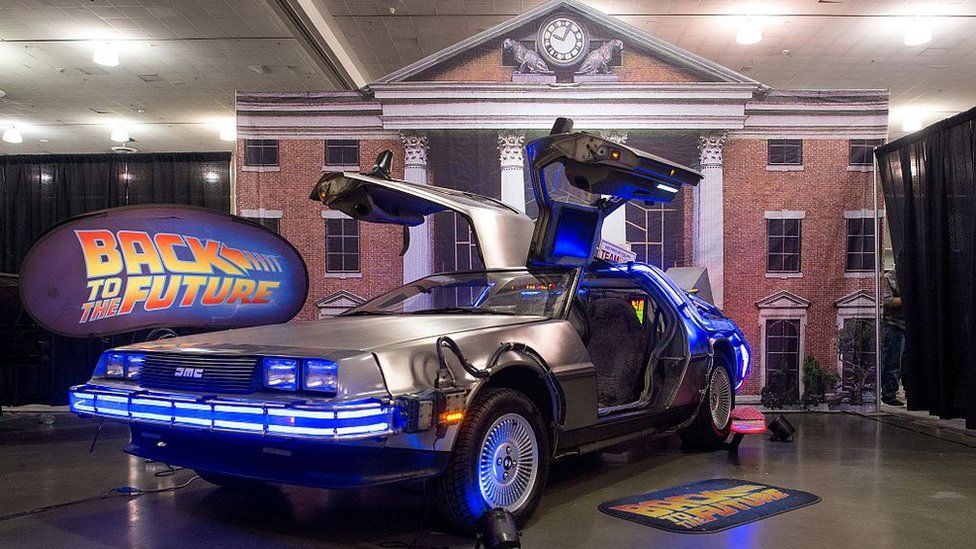
In reality, travelling by flying car, Prof Wright argues, would be more like hiring a taxi.
“You pull out your phone, and a robot car would draw up and it would take you to somewhere the size of a small park and the drone comes down, sets itself down, you jump in there. So in other words, you summon a drone taxi.”
Many companies are developing autonomous passenger drones. Recently Chinese firm Xpeng gave its first public demonstration of its X2 vehicle in Dubai.
But Mr Dukhovny strongly believes that the idea of being able to drive and fly in the same vehicle is an attractive one. When I ask him who will pay the Model A’s initial $300,000 (£266,000) price tag, he says “early adopters”.
He says people have been waiting for a flying car for a 100 years. Alef’s ambitious goal is to start selling vehicles in 2025.
-
-
28 April
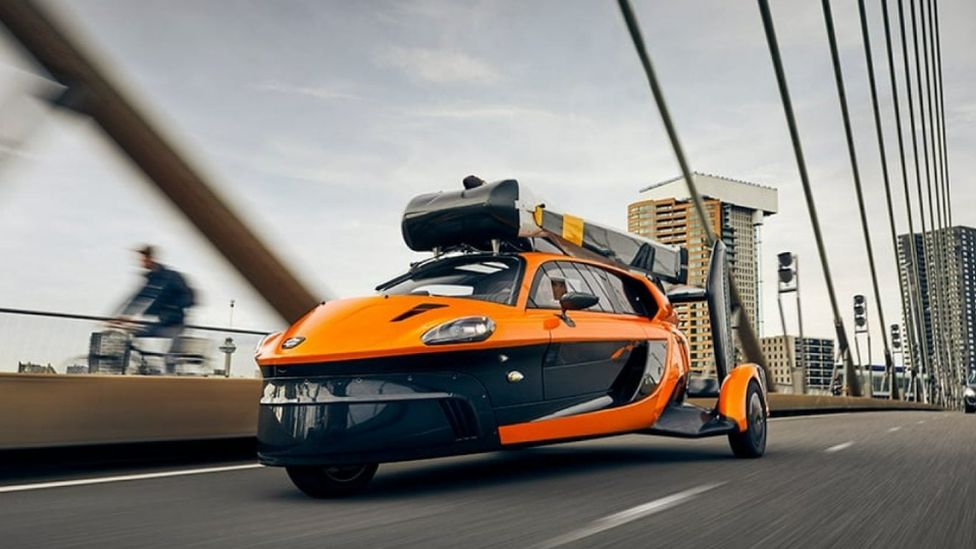
-
-
-
24 January
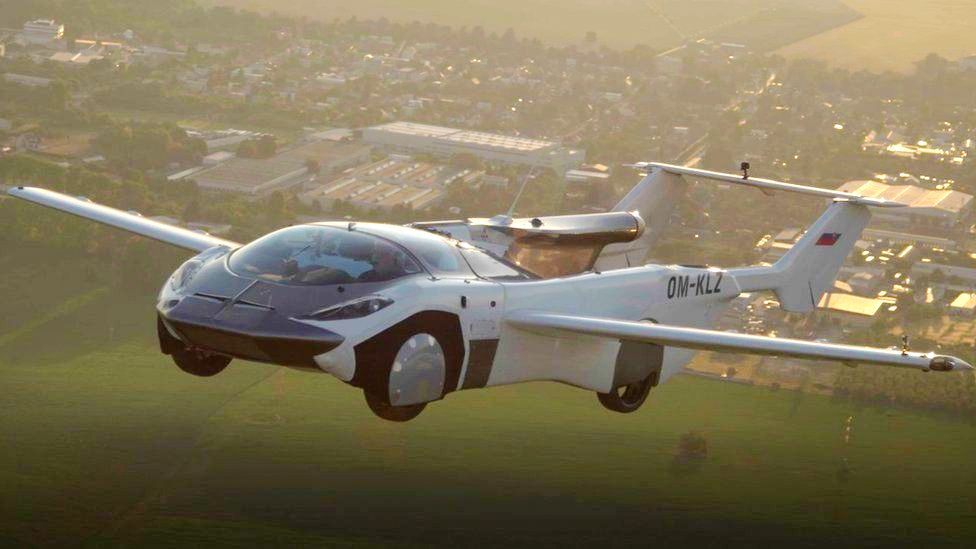
-
-
-
30 June 2021

-
